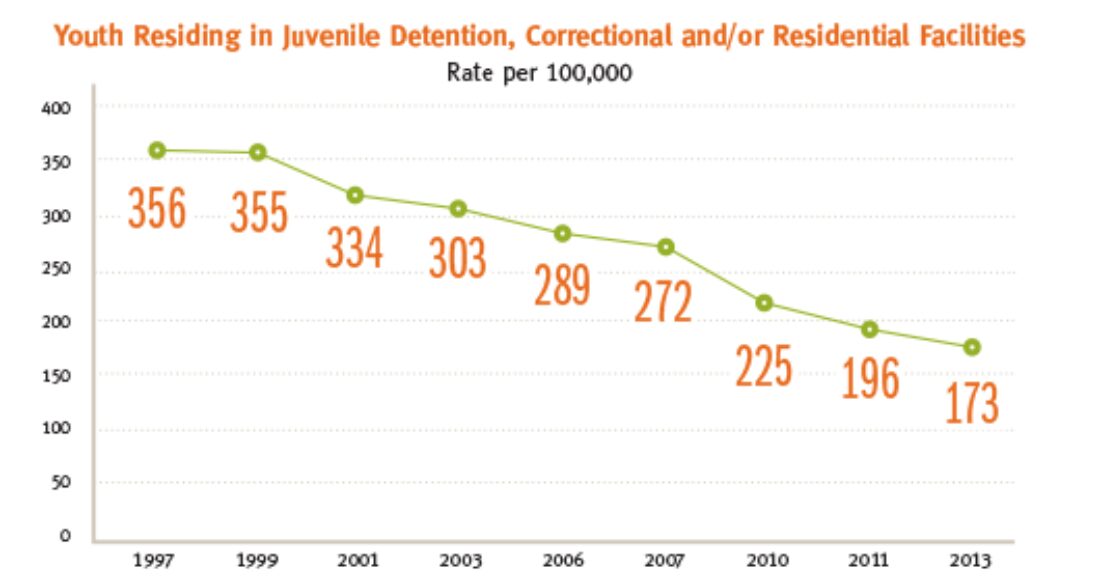Progress Check: Youth Confinement in America Today

The research is clear. Youth prisons and correctional facilities are dangerous, ineffective and unnecessary.
But here’s some good news:
America’s youth confinement rate dropped across all racial and ethnic groups during the last decade — and by 40% overall.
See how our reliance on confining youth has decreased over time
While these numbers are moving in the right direction, there’s clear room for improvement, according to statistics from the KIDS COUNT Data Center.
In 2013, the last full year for which data is available, America still placed more than 54,000 youth in juvenile detention, correctional and residential facilities.
Equally important, our nation’s lockup pattern is rife with racial inequities. Here’s what the data says:
- In every state across the country, black youth run a greater risk of being placed in confinement compared to their white peers.
- Relative to white kids, national confinement rates are
- Nearly twice as high for Hispanic youth.
- Three times higher for American Indian youth.
- And about five times higher for black youth.
- The two racial groups with the highest youth lockup rates—blacks and American Indians—saw the smallest cuts to confinement over the last decade.
- In six states, the confinement rate is more than 10 times higher for black kids than it is for white kids. This inequality is greatest in New Hampshire, where black youth are 36 times more likely to be locked up relative to their white counterparts.






